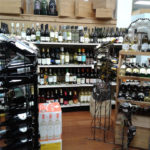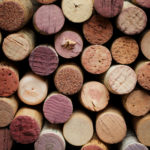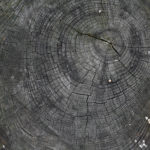Icons
[trx_section align=”right” dedicated=”yes” columns=”1_3″ scroll=”no” dir=”horizontal”]
[trx_icon icon=”icon-gallery” align=”center” size=”150″ bottom=”0″]
[/trx_section]
Wine is usually made from one or more varieties of the European species Vitis vinifera, such as Pinot noir, Chardonnay, Cabernet Sauvignon, Gamay and Merlot. When one of these varieties is used as the predominant grape (usually defined by law as minimums of 75% to 85%), the result is a “varietal” as opposed to a “blended” wine. Blended wines are not considered inferior to varietal wines, rather they are a different style of winemaking; some of the world’s most highly regarded wines, from regions like Bordeaux and the Rhone Valley, are blended from different grape varieties. Wine can also be made from other species of grape or from hybrids, created by the genetic crossing of two species. V. labrusca (of which the Concord grape is a cultivar), V. aestivalis, V. ruprestris, V. rotundifolia and V. riparia are native North American grapes usually grown to eat fresh or for grape juice, jam, or jelly, and only occasionally made into wine.
| [trx_title type=”5″ align=”center” bottom=”0″]Default[/trx_title] | [trx_icon icon=”icon-gallery” align=”center” size=”30″ bottom=”8″ top=”8″] | [trx_icon icon=”icon-gallery” align=”center” size=”40″ bottom=”8″ top=”8″] | [trx_icon icon=”icon-gallery” align=”center” size=”60″ bottom=”8″ top=”8″] | [trx_icon icon=”icon-gallery” align=”center” size=”80″ bottom=”8″ top=”8″] |
| [trx_title type=”5″ align=”center”]Circles[/trx_title] | [trx_icon icon=”icon-gallery” align=”center” box_style=”circle” size=”25″ bottom=”8″ top=”8″] | [trx_icon icon=”icon-gallery” align=”center” box_style=”circle” size=”35″ bottom=”8″ top=”8″] | [trx_icon icon=”icon-gallery” align=”center” box_style=”circle” size=”50″ bottom=”8″ top=”8″] | [trx_icon icon=”icon-gallery” align=”center” box_style=”circle” size=”70″ bottom=”8″ top=”8″] |
| [trx_title type=”5″ align=”center”]Square[/trx_title] | [trx_icon icon=”icon-gallery” color=”#0a0a0a” align=”center” box_style=”square” bg_color=”#f2f3f4″ size=”25″ weight=”100″ bottom=”8″ top=”8″] | [trx_icon icon=”icon-gallery” color=”#0a0a0a” align=”center” box_style=”square” bg_color=”#f2f3f4″ size=”35″ weight=”100″ bottom=”8″ top=”8″] | [trx_icon icon=”icon-gallery” color=”#0a0a0a” align=”center” box_style=”square” bg_color=”#f2f3f4″ size=”50″ weight=”100″ bottom=”8″ top=”8″] | [trx_icon icon=”icon-gallery” color=”#0a0a0a” align=”center” box_style=”square” bg_color=”#f2f3f4″ size=”70″ weight=”100″ bottom=”8″ top=”8″] |

















